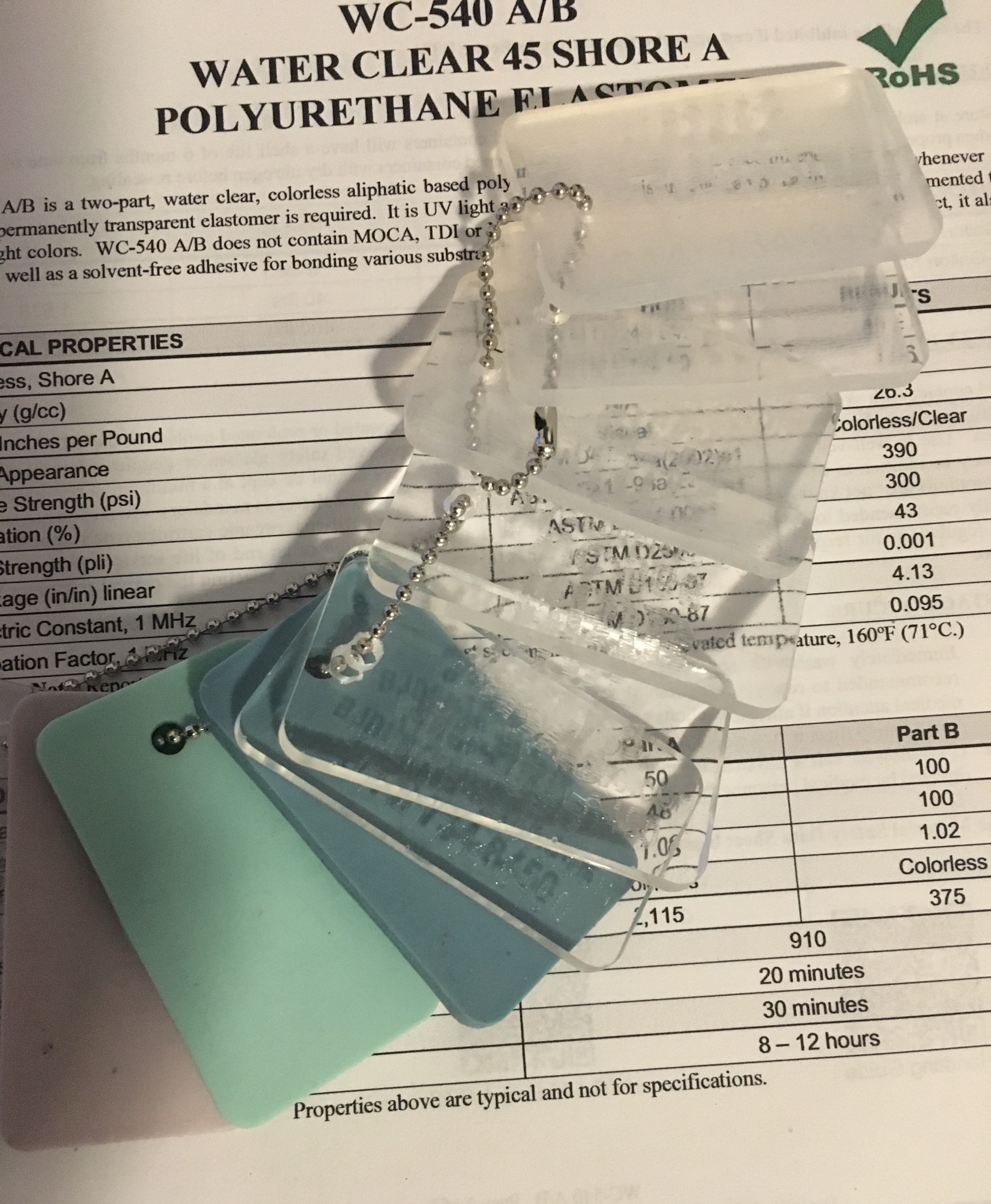Concept Generation for Materials
Platinum-Based Silicone
Two-part room temperature thermosetting platinum based silicone is being considered for the design due to its elastomeric properties and thermal stability. Silicon has low toxicity, antiadhesive properties, and low modulus, making it an ideal candidate for the vascular model [4]. Shore A hardness of 15-40 can be achieved with the translucent silicones being considered [26]. Although translucent, the silicon model may not be as clear as polyurethane.
30 Shore A Platinum Silicone
The 30 shore A translucent silicone has tensile strength of 700 psi, 400% elongation, and a tear strength of 65 pli. The mixed viscosity in the liquid state before setting is 45000 cps, and the work time is 30 min. [26] The lower viscosity will be easier to cast with than harder silicones. Although the lower tear strength and % elongation may be less desirable, this softer material may provide a better seal at the interface between the model and device. 30 Shore A hardness was also recommended by the team’s faculty advisor. Thermal stability gives silicone an advantage in performing consistently under different temperature and humidity conditions.
40 Shore A Platinum Silicone
The 40 shore A silicone has tensile strength of 865 psi, 540% elongation, and a tear strength of 95 pli. The mixed viscosity in the liquid state before setting is 65000 cps, and the work time is 40-45 min. [26] Although the higher viscosity may be slightly more difficult to cast with than 30 shore A silicon, the longer work time may offset this. Higher tear strength and % elongation will yield a stronger model than 30 shore A silicon, but harder material may not seal as well at the interface.
Water Clear Polyurethane Elastomer
The 45 shore A polyurethane has tensile strength of 390 psi, 300% elongation, and a tear strength of 43 pli. The mixed viscosity in the liquid state before setting is 910 cps, and the work time is 20 min [26]. This low viscosity liquid may be the easiest option for pouring into a mold. This material is the most transparent of those considered and will provide the best viewing of the catheter and device during insertion and deployment. This polyurethane is compatible with platinum silicone molds, is easy to cast with and releases easily after curing [26]. Polyurethanes are also superior to silicones in abrasion and flex-fatigue life. They are highly sensitive to environmental changes, and soften significantly with increasing temperature and humidity. [24] This could be advantageous in providing a rigid model that maintains its geometry but softens under testing conditions to provide a better seal. The cost of this material is slightly higher than silicones listed above.
Concept Selection for Materials
Properties of the material selected for the model including surface roughness, hardness, and shear modulus must relate to those of the arteries to replicate physiological conditions as stated in the project requirements. These engineering requirement targets were initially selected through research of mechanical properties of human anatomy. Research was performed to identify suitable materials to meet these requirements. It was found that since the arterial walls have complex structure and exhibit complex mechanical behavior, it is extremely difficult to match all material properties of the human anatomy [25]. Further research of vascular models constructed from non-biological materials was used to define reasonable target values and tolerances for materials to ensure the model will perform well.
"Pugh Matrix"
(This work along with the referances can be found in Reports under "Preliminary Reports")
Moving foward
Our project manager contacted a company that sells varrious silicones and polyurethanes. He requested samples of each material so that the team could start characterizing the material in order to make the final selection. To characterize these materials the team will be doing surface roughness tests, elastic tests, and tempature compliance tests. These tests will verify if the material is sutiable for our system. Below is a picture of the samples that the team will be testing.
